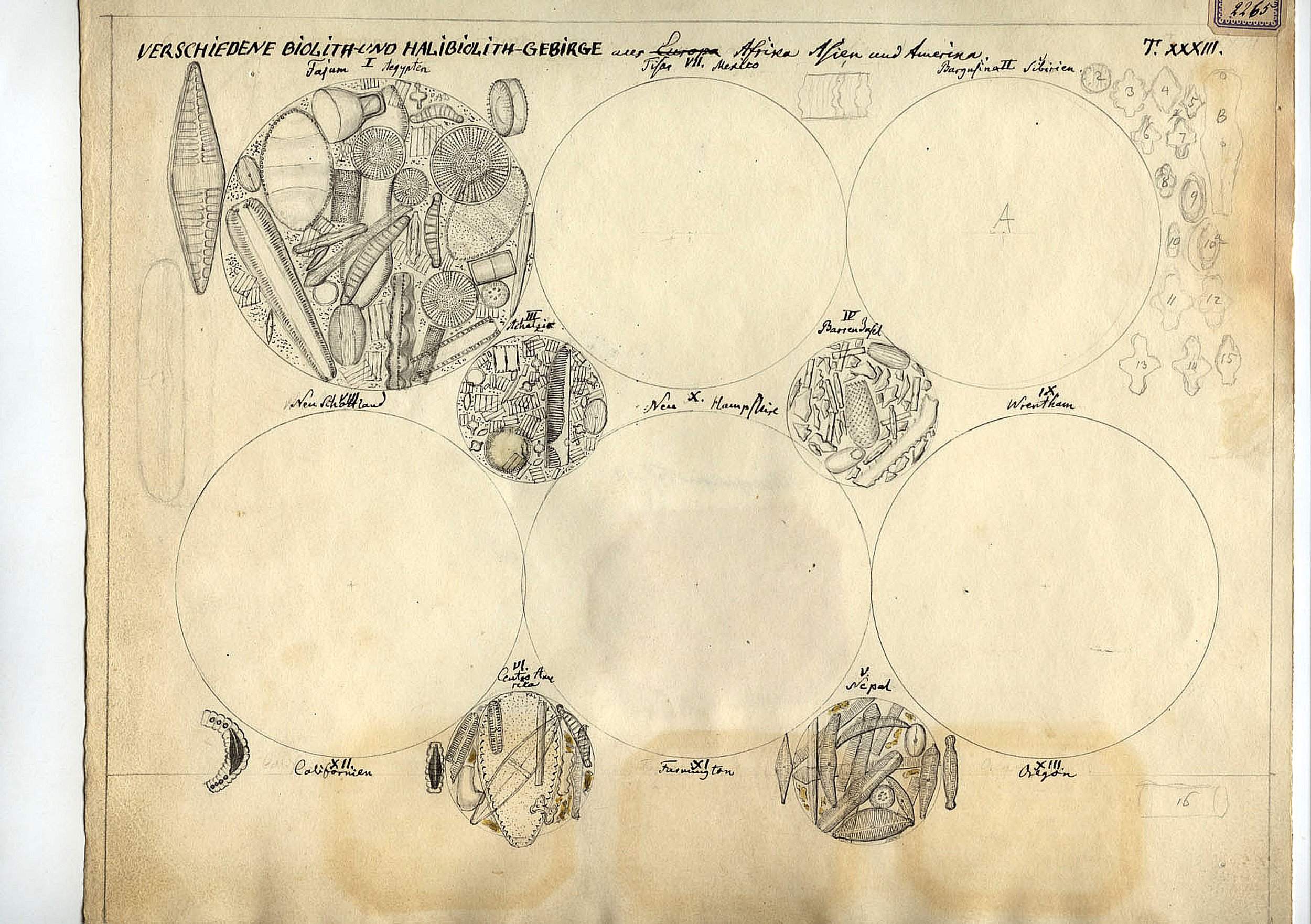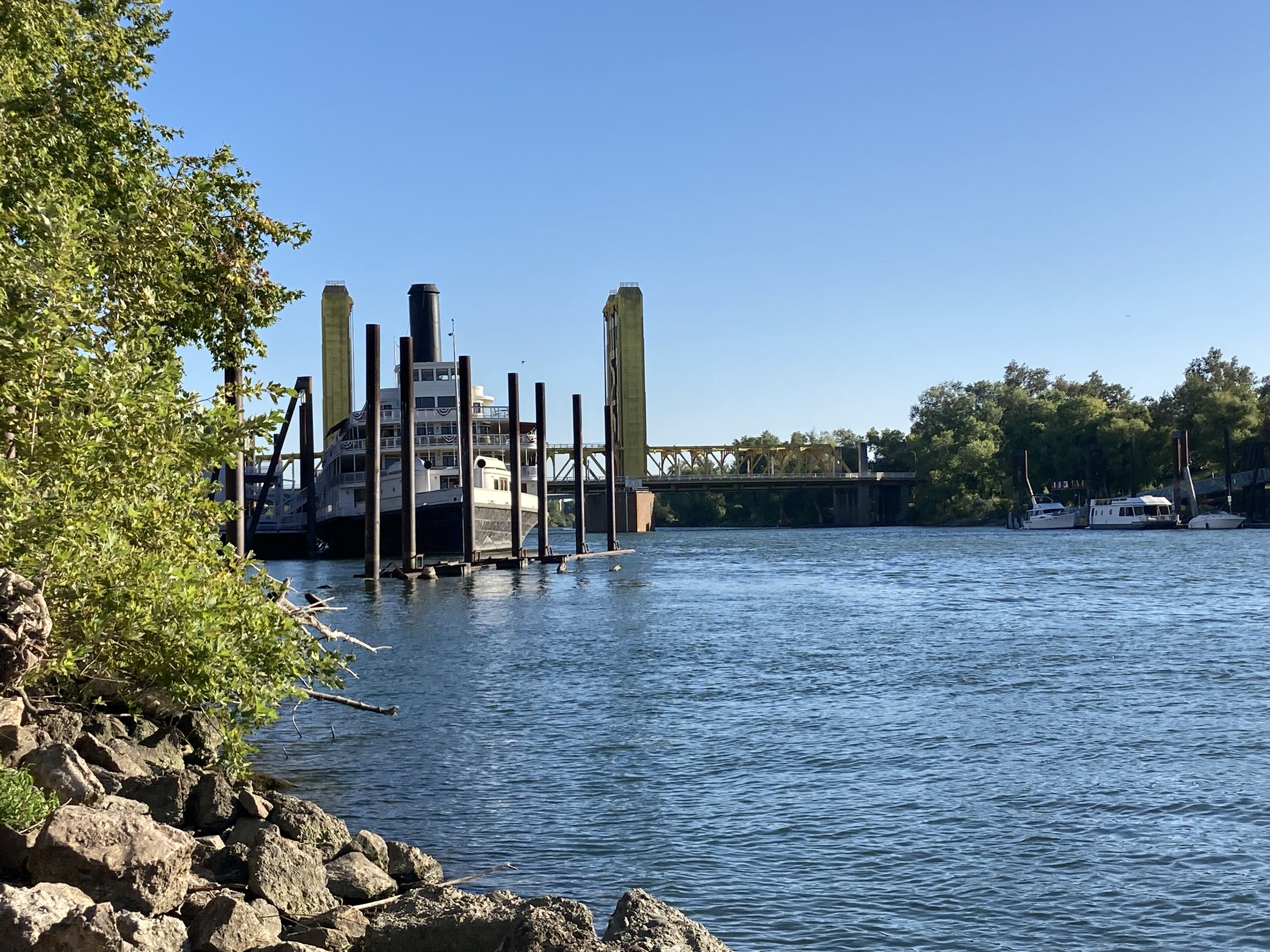The Sacramento River at
Old Sacramento, California
The Sacramento River at Old Sacramento, California, 2022 — Ink, watercolor, algae pigment, and forest fire charcoal on paper
The Sacramento River is the longest river in California, snaking 400 miles through the heart of the state’s incredible agricultural heartland. One of the most important waterways in the state, this river has been an important source of food, transportation, and sustenance for thousands of years and many first nations tribes. Several mentions of the Sacramento River are listed in the database with many date and name associations.
Californien, Sacramento River Feiner Flusssand 2. Alexander Rose Juli 1852.
These details leave few clues on the specific location of the sample, although other Sacramento River samples have a bit more information associated with them. This sample seems to be associated with Alexander Rosé, a notation that may indicate his son Hermann Alexander Ehrenberg born to his first wife Julie Rose provided or had some part in acquiring the sample.
Map of the various Frémont Expeditions in the western United States. The third expedition, here shown in black, shows multiple locations along the Sacramento River Valley and through other locations associated with these dates. Map from College of Charleston.
Listed on some maps as Rancho Nueva Helvetia, Sacramento would have been a critical stop on many expeditions traveling through the area. Associated with the gold rush and later water rights, this was an important settlement and the home of the Nisenan, Maidu, and many other First Nations.
The California part of the historic ledger and database has the most mismatched information of the western United States samples, with many more California locations listed in the .csv data than in the handwritten records. Although the city of Sacramento is not specifically listed, I do believe this would have been a sample source due to the importance of Sacramento as one of the established settlements in the California interior. Due to the date listed for these samples, I believe these were likely collected on the third Frémont Expedition and later sent by Jacob Bailey or an associate to Dr. Ehrenberg.
The Sacramento River sampled in the Old Sacramento district of modern-day Sacramento, California.
Dr. Ehrenberg’s observations
Images of roundels with various microorganisms, including a seemingly unfinished California composition. Image used with permission from the Natural History Museum of Berlin.
Unfortunately Dr. Ehrenberg’s collection does not have extensive illustrations from these samples. Many of the assemblages we have in the collection were produced for earlier published works like Mikrogeologie, published in 1854.
All Californian illustrations seem to depict marine diatoms in other sample collections, so a direct specimen study will be needed to compare the samples.
My observations
Since the artistic record here has holes, my samples cannot be directly compared to the historical illustrations. The organisms in this piece include the beautiful Terpsinoë musica, sponge spicules, desmids, green algae, and a variety of organisms that seem to align with other samples and illustrations taken from the larger area.
Downtown Sacramento with historic dockyards in the background.














